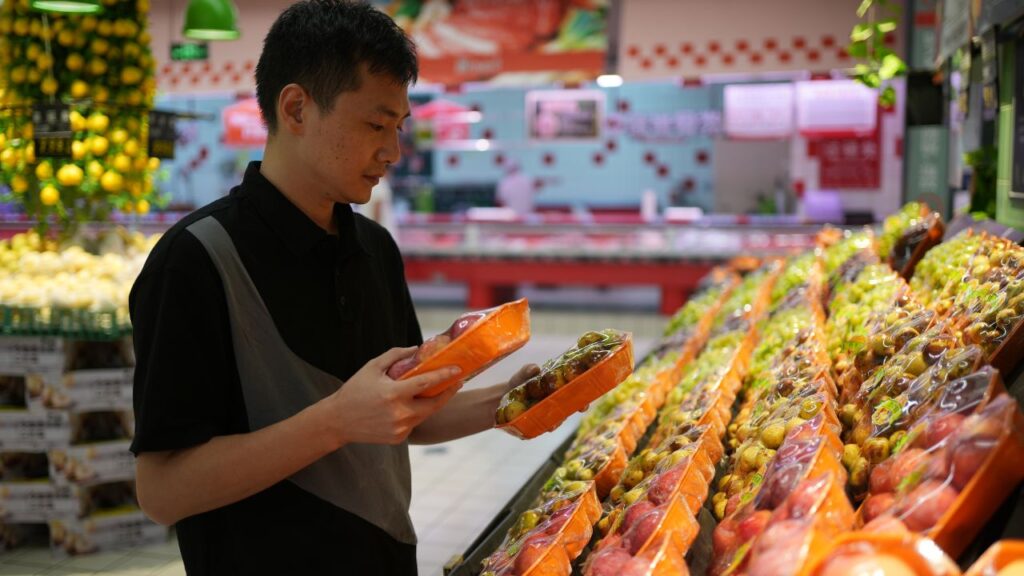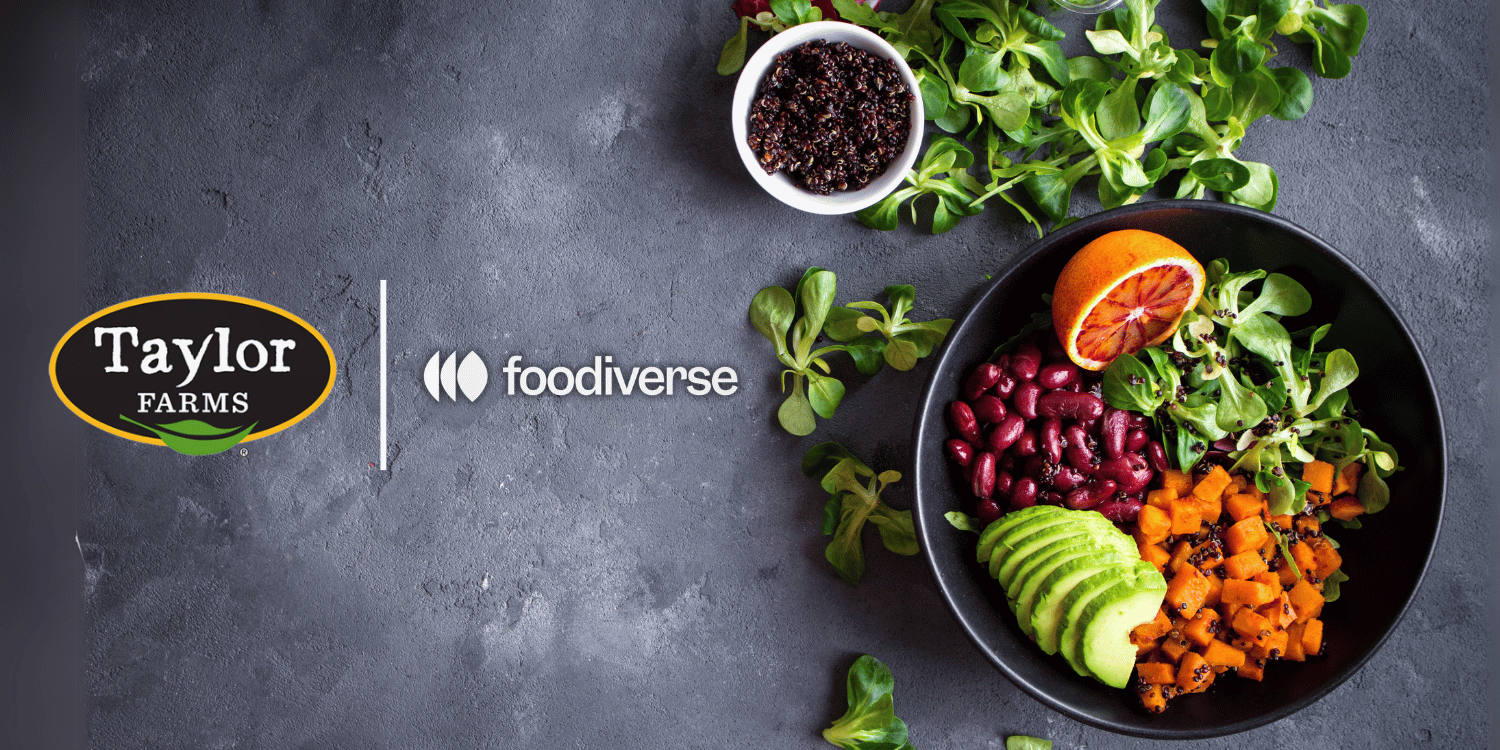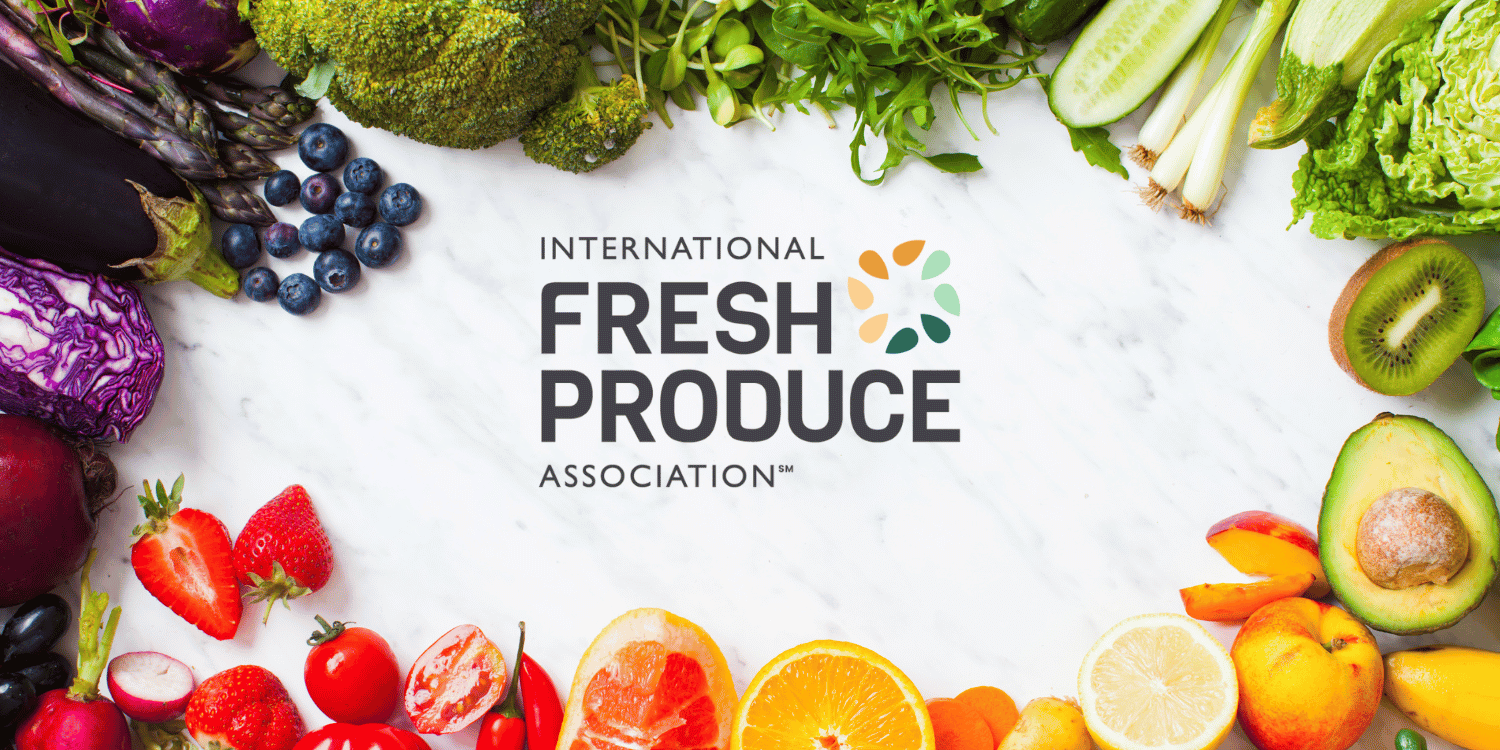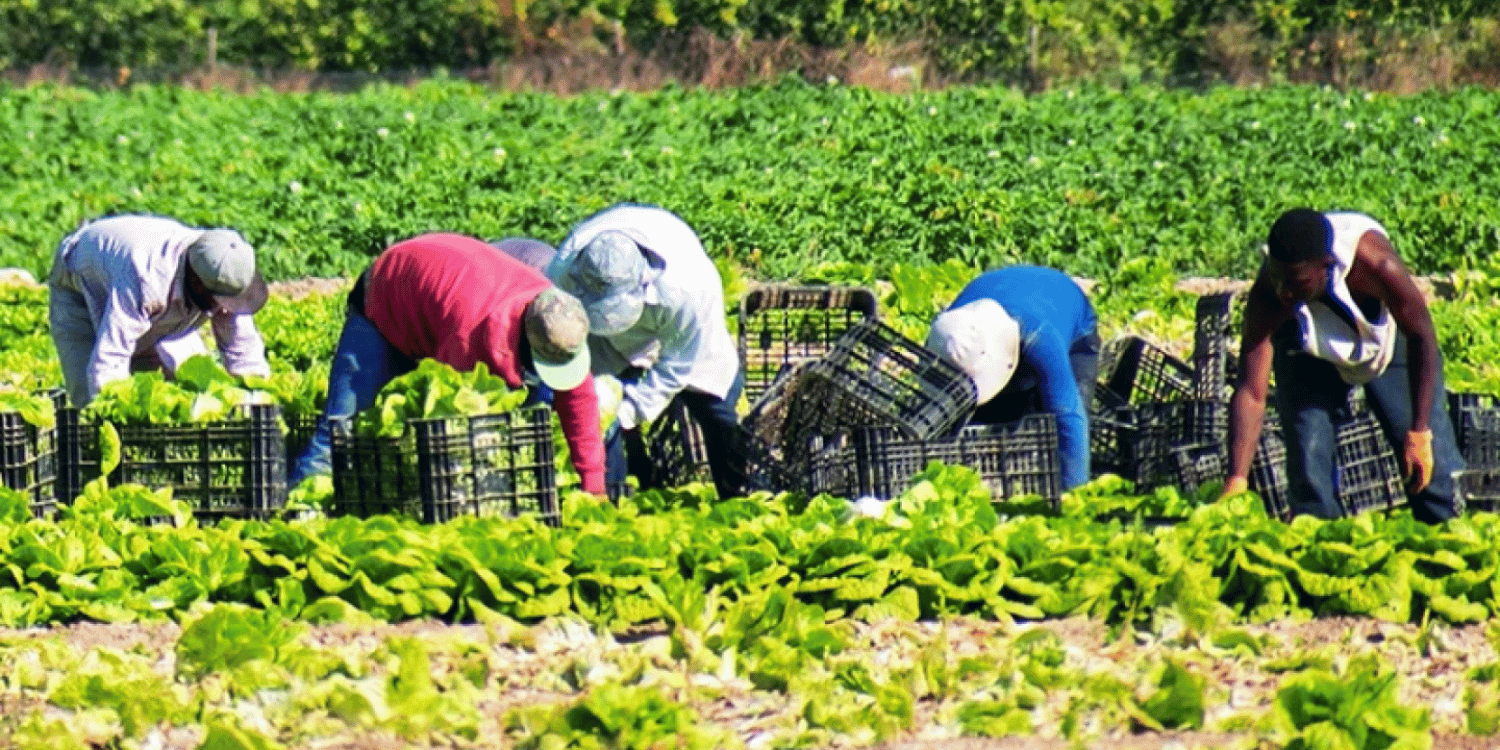Understanding consumer behavior through produce store layouts involves studying purchasing patterns relative to the arrangement of goods.
Through this, store owners gain insights which can help optimize store designs, increasing sales and improving customer satisfaction.
For instance, strategic placement of fresh produce near the store entrance prompts an impression of freshness and quality, thereby influencing purchasing decisions.
Further, organized and accessible layouts with easy visibility of prices tend to result in higher sales, reflecting the consumer preference for convenience.
Data regarding time spent in various sections of the store can also be utilized to make informed decisions about product placement.
Overall, comprehending consumer behavior through store layouts is an invaluable strategy for enhancing commercial success.
- Consumer behavior significantly influences produce store layouts.
- Organized layouts can directly contribute to higher sales.
- Fresh produce placement plays a critical role in customer satisfaction.
- Data utilization for product placement can optimize store layouts.
- The time customers spend in store can affect commercial success.
With this understanding of how consumer behavior shapes store layouts, we can now progress to related aspects that enrich this topic. You will find additional engaging content in the following sections, where we discuss aspects like psychological perspectives of shopping, and the role of sensory elements in influencing purchasing decisions.
Drawing from research and expert insights, I also uncover the strategic significance of checkout locations and aisle categorizations. We’ll explore how these factors influence spontaneous buying decisions and contribute to a holistic shopping experience.
Such comprehensive insight will help you appreciate the profound impact of store design on consumer behavior, making way for well-informed decisions in commerce settings. Stay tuned for enlightening discussions on these intriguing facets.
Contents [hide]
- What Defines Consumer Behavior?
- Importance of Produce Store Layouts
- Impact on Customer Satisfaction
- Role of Fresh Produce Placement
- Organized Layouts and Higher Sales
- Visibility of Prices Influencing Sales
- Utilizing Data for Product Placement
- Effect of Time Spent in Store
- Boosting Commercial Success Via Layouts
- The Bottom Line
What Defines Consumer Behavior?
In Short: Consumer behavior, a calculated process shaped by socio-cultural, psychological, personal, and marketing mix factors, involves the understanding, analysis, and prediction of decision-making processes when purchasing and using goods and services. Businesses can effectively generate interest and meet consumer needs by comprehending these forces influencing consumer buying patterns.
Consumer behavior grapples with the actions and decision-making processes of individuals or groups when they purchase and use goods and services. Do you ask yourself, what drives customers to choose one product over another?
It fundamentally relies on the understanding that consumers are not simply recipients of marketing strategies but active participants in their buying journeys. Why do some purchases spark joy while others are driven by necessity?
The guiding forces behind consumer decisions are choices and preferences, profoundly influenced by individual needs, desires, and values. Doesn’t it sound astonishing that even the most trivial purchases we make are tied to our identities?
Consumer behavior is primarily shaped by four key factors. Let’s dive deeper into each of these core pillars:
- Socio-cultural factors: These involve influences from family, friends, and society at large.
- Psychological factors: These include personal motivations, perceptions and attitudes.
- Personal factors: These encompass individual lifestyle, personality, and economic status.
- Marketing mix factors: These are the elements under a company’s control such as product, price, place, and promotion.
Psychological triggers like motivations and perceptions play significant roles in shaping buying behavior. Isn’t it true, after all, that we often buy items because they fulfill a need, whether it’s basic or aspirational?
A consumer’s unique lifestyle and personality also immensely affect purchasing decisions. Think about it, don’t your personal interests heavily influence your buying patterns?
The role that the socio-cultural environment plays in the behavior of consumers can’t be underestimated either. Are we not often swayed by societal trends or desires to fit into certain groups?
The marketing strategies of companies are also profoundly essential in this intricate equation. A simple change in the price of a product or placement of a store can alter purchasing decisions. Isn’t that impactful?
Given these influences on purchasing decisions, it becomes evident that consumer behavior is not random. Rather, it is a calculated process embedded in societal, psychological, and personal constructs. It’s quite intricate, is it not?
By harnessing the understanding of these underlying drivers, businesses can pique consumer interest more effectively and create strategies that meet them right at their points of need. Understanding consumer behavior is undoubtedly essential, wouldn’t you agree?
Importance of Produce Store Layouts
In Short: Produce store layouts are an influential factor in consumer shopping behaviors, utilizing strategic design to foster a pleasant shopping experience and provoke specific responses, such as impulse buying and repeat visits. Awareness of these layout strategies can offer shoppers a more informed perspective, leading to a win-win situation where consumers have a satisfying experience and stores increase sales.
When we walk into a produce store, what’s the first thing that hits us? The sheer variety of fruits, vegetables, and other produce elegantly displayed all around. But did you ever stop to wonder why that specific layout?
As it happens, the layout of a store, particularly a produce store, plays a significant role in influencing our shopping behaviors.
What we see as a simple arrangement of shelves is a carefully thought-out plan designed to optimize consumer purchasing habits.
How’s that possible, you might wonder?
Produce store layouts can impact our decisions in numerous ways. Have you ever found yourself buying more than you initially intended to? That’s the layout working its magic!
Let’s analyze some certain key factors that make store layout crucial in consumer behavior:
Briefly, here are some ways layouts impact your shopping experience:
- Esperiental shopping: A well-planned layout can create an experiential shopping voyage for the customer.
- Impulse buying: Strategic placement of items can encourage impulse buying, boosting store sales.
- Sale of high-margin items: Specific positioning can draw attention to high-profit margin products.
- Commoditized shopping: Judicious positioning can make shopping more comfortable, encouraging future visits.
Now don’t we all want a pleasant shopping experience?
That’s where the layout of the store comes in.
A well-laid-out store can make your shopping experience quite enjoyable. This then drives repeat visits, forming a long-term relationship with the store.
Surprising as it may seem, there is an element of psychology involved here too.
The positioning of different products can trigger specific responses from shoppers. The creative use of store spaces can effectively guide consumers’ paths, affecting how they interact with the merchandise.
For instance, ever wondered why the fresh produce section is usually the first thing you see? Well, the sight and smell of fresh fruits and vegetables have a calming effect on shoppers. But more importantly, it sets a healthy mind frame, subtly nudging them to spend more!
That’s not it. Do you know the store layout can also manipulate how much time you spend inside? Yes, you heard that right!
A complicated layout might confuse customers, but it ensures that they spend more time in the store. This, in turn, increases the likelihood of them making unplanned purchases.
Are you thinking, well, this seems a touch manipulative?
Yes, admittedly it is. However, it’s more about creating a win-win situation where the shopper gets a satisfying experience, and the store increases sales.
Pro Tip: Optimizing the layout of a produce store can significantly influence customer shopping behaviors, leading to increased sales and repeat visits due to an enhanced shopping experience.
As consumers, awareness of these strategies offers us a more informed perspective while shopping.
After all, who doesn’t appreciate the inner workings of places that play such a significant role in our day-to-day lives?
Impact on Customer Satisfaction
In Short: A store’s layout influences customer satisfaction, impacting shopping direction, purchase decisions and overall shopping experience. Factors such as strategic product placement, clear navigation, ambient lighting, spacious aisles, and a smooth checkout process contribute to a satisfying customer journey.
The way products are arranged in a store significantly influences customer satisfaction.
The customer’s journey through a store is primarily determined by the store layout.
Consider walking into a produce store. Where do you head first?
The store layout impacts your shopping direction, right?
Let’s discuss the placement of essential, high demand, and impulse products.
- Essential products are typically placed at the back, encouraging customers to explore the entire store.
- High demand products are rightfully placed in more visible and accessible locations.
- Impulse products – candies or magazines – are often located near the checking counters to captivate customers while they wait in the queue.
Surely you have noticed these strategic placements before.
Theoretically, a well-planned store layout increases the likelihood of unplanned purchases.
But does this approach always lead to high levels of satisfaction?
Not necessary.
Unexpectedly coming across an item of interest can instigate a sense of delight.
However, encountering too many unplanned purchases may induce a feeling of being manipulated.
Do you realize how easily a delightful experience can turn into an overwhelming one?
The store layout, therefore, should foster a balance in enticing the customers towards unexpected discoveries while making sure they don’t feel ensnared.
In terms of navigating the store, an intuitive and logical arrangement of products typically provides a satisfying shopping experience.
A chaotic layout can make finding an item a tiring, frustrating quest, negating customer satisfaction.
So do truckloads of products placed haphazardly bring joy or annoyance?
An overwhelming number of articles suggest the latter.
Similarly, maintaining a clean, spacious, and well-lit environment is of utmost importance.
Lighting can sometimes be an underestimated aspect of a store layout, but it plays a significant role in creating an ambiance that can delight customers.
Imagine shopping for fresh fruits and vegetables in a poorly lit store.
Doesn’t sound like an appealing experience, does it?
The spacing between store aisles also influences shopping experience.
Narrow aisles clustered with customers make shopping a tiring ordeal rather than a relaxed, joyful venture.
Ever found yourself rushing out of a overly crowded store?
The queue at the checkout counter is another significant determinant of customer satisfaction.
A long, slow-moving queue immediately antagonizes a customer.
So while designing the checkout area, the primary concern should be facilitating a smooth, swift payment process.
These are some of the ways the layout of a produce store can impact customer satisfaction.
Being conscious of such factors allows businesses to design a layout that can optimize the shopping experience for customers.
Role of Fresh Produce Placement
In Short: The placement of fresh produce is a strategic move by retailers to stimulate buying behavior, ensuring delicate items aren’t crushed while psychologically promoting healthier choices. Supermarkets also use various other techniques such as eye-level product placement, back-store dairy sections, and separate bread and milk locations to facilitate a smooth flow, increase impulse purchases and enhance customer satisfaction.
The precise placement of fresh produce significantly influences consumer behavior. Did you ever consider why fruits and vegetables are often the first sections in supermarkets?
Is it mere chance? Definitely not. This auspicious layout strategy serves a dual aim.
Firstly, the fresh produce section, abundant with brilliantly colored fruits and vegetables, greets customers with a visually stimulating display. This propaganda provokes feelings of warmth and healthiness , aligning with the store’s image of providing nutritious goods.
Secondly, placing fresh produce at the entrance ensures that these items, which tend to be more delicate, aren’t crushed beneath canned or packaged foods. Isn’t it wonderful how store layouts protect your apples and tomatoes?
The placement also offers a subtle psychological trick. It lulls consumers into believing they are making healthier choices, which then justifies indulging in less nutritious items in following aisles. Have you noticed this trick working on your food choices?
An important aspect to note is varying strategies supermarkets use to enhance the shopping experience. Here, we list a few:
- Eye level products – Items most profitable to the store are placed at an average consumer’s eye level.
- Dairy section – This is usually placed at the back of the store to entice customers to go through all the aisles, increasing the chances of impulsive buys.
- Bread and milk placement – These frequently purchased goods are often placed apart to encourage customers’ movement throughout the store.
However, the layout is not just for enticing you into buying more
The plan is established to support ease of shopping with a systematic route in and around the store. It saves customer’s time and energy, while also making the entire shopping process smoother.
What does the shopper gain from this layout? You walk into the store and can immediately begin collecting fresh produce, moving followingly through the aisles in a singular direction.
It minimizes the need to go back and forth between aisles. This strategy shows the store’s concern about consumer convenience and service.
Remember that the store is always researching and working on improving its layout. Why? To maximize both its revenue and your satisfaction.
Whenever you enter a grocery store, see if you can identify these strategies in play.
Are the fruits and vegetables in the front? Can you see the most expensive goods placed at eye level? Are bread and milk located far away from each other?
Important: The precise placement of fresh produce in supermarkets significantly influences consumer behavior, serving to provoke feelings of warmth and healthiness, protect delicate produce items, and subtly encourage the purchase of both nutritious and less nutritious items.
In the end, everything in a store is strategically laid out to subtly guide your purchasing decision.
Awareness of the factors affecting your choices can help you become a more informed and successful shopper. Isn’t being a smarter shopper a rewarding experience?
Organized Layouts and Higher Sales
In Short: A well-organized store layout impacts customer navigation and purchase behavior, thus boosting sales. Strategic product placement, pleasant ambiance, and understanding customer psychological triggers can contribute to enhancing customer spending habits and ultimately increasing store earnings.
Whether you run a large supermarket or a small produce store, a well-organized layout is crucial for your success.
This isn’t only because it creates a pleasant shopping environment, but also because it can significantly improve your sales.
Many retailers \lack an understanding of the importance of store layout.
Do you realize how this can impact the way customers navigate around your store,
and ultimately how much they spend?
Let’s immerse ourselves in ways this layout scheme contributes to increased earnings.
Perhaps, isn’t it intriguing to comprehend how the physical arrangement affects customer buying behavior?
The order of your store layout tends to guide customers’ eyes to specific products.
Upon entering a store, the human eye naturally moves left to right.
A well-thought-out layout strategically positions premium products towards the right side.
Ever wondered why most stores have a flow that pushes customers counter-clockwise?
It is a deliberate choice designed to guide customers to the right side of your store where they are likely to make more purchases.
Let us look at some of the proven strategies employed by successful retailers in designing their store layouts.
- Essential items are often placed at the back of the store, encouraging customers to walk through other products, increasing their likelihood of making additional purchases.
- The impulse buy is a powerful tool often indulged in through strategic positioning of items at checkout points.
- Seasonal or promotional items are often placed at the front of the store to draw customers in.
Are these strategies coincidences? Of course not, they are carefully curated and tested to maximize purchases.
Moreover, a well-organized store layout isn’t just about placement of products, but also about creating a pleasant and comfortable atmosphere for customers.
Have you considered the overall ambiance of your store?
Appropriate lighting, pleasant music, and comfortable temperature all play a crucial role in influencing a customer’s mood, length of stay, and ultimately their purchasing decisions.
Ever noticed how some stores play soothing music?
These elements are purposely set to make customers feel relaxed, take their time to browse through the aisles, and in turn, buy more.
A chaotic and crowded store can discourage customers from spending time and, eventually, from spending money.
It’s worth remembering that effective store layout is about understanding the psychological triggers of your customers and using that knowledge to influence their shopping patterns.
Pro Tip: Implement a well-organized store layout to guide customers’ eyes towards specific products, utilizing psychological triggers to influence shopping patterns, and ultimately maximize your sales.
In essence, does your store layout meticulously cater to your customer’s shopping tendencies and habits?
If not, this is a prime area to put emphasis on to potentially boost your store’s sales numbers.
Visibility of Prices Influencing Sales
In Short: Prominent display of price tags significantly influences consumers’ buying decisions, potentially leading to increased satisfaction and higher sales. However, balance is required to avoid potential discouragement from buying more expensive items.
Have you ever noticed how price tags appear conveniently visible in a supermarket? This isn’t accidental. Every detail is a careful decision aimed at influencing consumer behavior.
The take we’re exploring today is the impact of prominently displayed prices on consumer buying patterns. Achieving heightened sales may be as simple as designating the right pricing strategy.
Pricing clarity is a major factor that influences consumers’ decision to purchase. If customers struggle to locate or understand a product’s pricing, sales might suffer.
Doesn’t clarity enhance decision-making?
Picture this: you walk into a grocery store with your shopping list. The first item you need is a bag of apples. Although a vast array of apple varieties lies before you, each price tag is placed so inconspicuously that they barely catch your attention. Isn’t this scenario likely to frustrate or even dissuade you from making a purchase?
By enhancing price visibility, purchasing decisions might be simplified. Let’s explore some strategies a store might employ to optimize pricing visibility:
- Proximity – Placing price tags close to the item, enhancing its visibility.
- Color Contrast – Using colors to differentiate price tags from their surroundings.
- Size – Making price tags larger and more discernible.
- Simplicity – Ensuring the design of the price tag doesn’t confuse customers.
It’s reasonable to wonder, how can this visibility really impact sales? Studies imply, prominently displayed prices can facilitate sales by satisfying the customer’s need for immediate and easily accessible information, thus simplifying their choices.
Consequently, this could lead to increased customer satisfaction and ultimately, higher sales.
Conversely, it must be considered that excessive emphasis on prices might discourage sales of more expensive items. After all, who wants to be reminded that their favorite organic juice is twice as expensive as the regular kind?
Balance is therefore required in displaying pricing information prominently, but not overwhelmingly.
Understanding consumer behavior is indeed a comprehensive science. Meticulous store layouts, including detailed pricing strategies, play a crucial role in shaping purchasing behavior.
Reflect on this – isn’t the power of detail fascinating?
Utilizing Data for Product Placement
In Short: Product placement in grocery stores is strategically informed by customer data to enhance shopping experiences and increase sales. Using data analytics, stores analyze consumers’ buying habits and preferences to facilitate impulse buying and ensure return business.
The entire concept of product placement in a produce store starts by understanding the behavior of consumers. Have you ever wondered the driving force behind the location of your favorite fruits or vegetables in the store?
Well, it’s not a random choice. The product placement has a significant impact on customer purchase behavior, which is backed by heaps of data and research.
The central idea is to make the shopping experience pleasant for customers, encouraging them to spend more time in the store and eventually buy more products. To achieve this, retailers employ meticulously planned strategies based on data analytics.
Allow me to paint you a picture.
- They study the flow of traffic in the store, essentially, how customers move around.
- They analyze which products customers often buy together and then strategically place these items in nearby or adjoining aisles.
- To compel buyers to explore more, they put high demand products or essentials in the farthest corners of the store, driving footfall through other aisles.
All these steps help increase impulse buying among customers. Isn’t data a powerful tool?
Now, where does this data come from? It’s from you and me: the consumers. With every single purchase, we provide useful insights into our preferences and behaviors.
Data ranging from our shopping frequency, the time we usually shop, the products we buy, our preferred brands, and even the quantity we typically purchase contribute to these insights. Wondering how they capture this data?
Well, one key method is through loyalty or reward card schemes. Each swipe of the card records invaluable consumer data, which is then analyzed using data analytics tools.
The introduction of smart technology marked a new era in data collection. Today, with digital receipts and sophisticated point of sale systems, stores can record every detail about each purchase.
Fascinating, isn’t it? These strategies are all about enticing customers and maximizing profits, all achieved through smart data analysis and strategic product placement.
However, achieving the main goal of increased profits while catering to the customers’ convenience is a delicate balance. Think of it as an art that requires finesse, guided by data, and honed by experience.
Important: The product placement in a produce store, which significantly impacts customer purchase behavior, is based on analytical strategies derived from detailed consumer data, with the ultimate goal of facilitating a seamless shopping experience that encourages customers to return.
Knowing your facts through data interpretation plays a critical part in effective product placement.
I want you to remember, the ultimate goal is to provide customers with a seamless shopping experience, one that makes them want to return and shop again. This is an essential mark of a successful produce store. Does your favorite store do that?
Effect of Time Spent in Store
In Short: The time a consumer spends in a store significantly influences their shopping behavior, with longer durations increasing the likelihood of impulse purchases. The layout of a store, including product placement and necessity goods location, strategically extends the shopper’s journey, thereby exposing them to a wider range of products.
One may wonder, does the time spent by a shopper in a store really have an effect on their shopping behavior?
Well, according to a number of studies, it certainly does. It is suggested that the longer a consumer spends in a shop, the more likely they are to make impulse purchases.
Interestingly, the likelihood of making impulse purchases also increases when the consumer feels more comfortable in the store. Which may explain why many establishments focus on creating a friendly and appealing shopping environment.
The arrangement of goods or products in the supermarket also influences the time the buyer spends in the store.
This notion brings us to an essential aspect of retail management. How does a store layout influence a consumer’s shopping behavior?
It all comes down to the science of store layouts.
Simply put, the layout refers to the way products and aisles are arranged within a shopping environment. And the layout isn’t just about aesthetics or trendiness..
It serves the strategic purpose of extending the shopper’s journey within the store.. This, in turn, increases their exposure to a wider range of products.
Allow me to share a few points we should examine to better understand how this works:
- Product placement: Items that are placed at eye-level are more likely to be picked up by consumers.
- Necessity goods: Staples like bread and milk are often placed at the back of the store, forcing shoppers to walk past other enticing items.
- Attractive displays and holiday-themed layouts can also encourage slower strolls through the store.
Though one may argue that these tactics seem a bit manipulative, they’re simply strategic.
Retailers are in the business to sell and a well-planned store layout uses space efficiently.
They leverage consumer behavior to establish an environment that is beneficial both to the business and the customer.
Does this mean that supermarkets intentionally make our shopping experience confusing?
Not necessarily. While complex store layouts may seemingly lead us on a grand adventure around the store, this isn’t their main purpose.
Rather, the intent is to expose consumers to a diverse range of products.
This way, we may discover new items we might need or want. But is it all about selling more?
Pro Tip: Spend more time analyzing the store layout and product placement, as it’s strategically designed to extend your shopping journey, expose you to a wider range of items and potentially increase your likelihood for impulse purchases.
Not completely. To be sure, the primary goal of these techniques is to enhance sales.
But a secondary consideration is creating a pleasant shopping experience that encourages return visits. Consider how these tactics affect your shopping behavior. Has it changed the way you view store layout and shopping?
Boosting Commercial Success Via Layouts
In Short: Supermarkets influence consumer behavior through strategic store layouts that encourage impulse buys, promote product quality and lead customers past maximum products. Understanding these tactics, including first impressions, flow and traffic patterns, shelf placement and back-of-store essential items can help retailers maximize sales by tapping into shopper psychology.
Visualize stepping into a grocery store. Upon entering, your senses are bombarded with a plethora of color, texture and aroma.
The lovely sight of ripe juicy strawberries crossing your field of view gives you this irresistible urge to pick up a basketful. Can this be a mere coincidence? Or is it strategic placement?
Ever wondered what makes you deviate from your shopping list and gravitate towards fresh produce casually placed near the entrance? Well, it is high time that we dive into the importance of produce store layouts and how they sway consumer behavior.
Firstly, let’s talk about the power of first impressions. The produce section is usually the first area you encounter in supermarkets. Is it random? Hardly!
This strategic move serves a dual purpose: establishing quality and encouraging impulse buys. Seeing fresh fruit and vegetables firsthand gives an impression of freshness and quality, promoting a positive image of the store.
Moreover, the produce section triggers impulse purchases. Have you ever ended up buying items you didn’t initially intend to? That’s design magic at work!
Let’s break down how store layouts manipulate consumer behavior:
- Flow and Traffic: Supermarkets are designed to lead you around the store, making you pass by as many products as possible.
- Shelf Placement: High-demand items are usually placed in the middle of aisles, where they are easily noticeable.
- End of Aisle displays: These are prime spots for promotional items and special offers.
- Essentials at the Back: Having essential items at the rear of the store ensures customers wander past all the other tempting offerings.
Let me tell you, how can retailers use these strategies to maximize success? It’s not just about selling fruits and vegetables; it’s about generating sales through shopper psychology.
Ever noticed the small essentials like milk or eggs located at the furthest corner of the store? That’s the ‘essentials at the back’ rule at play. You wander deeper into the store, encountering more items and increasing the likelihood of adding them to your shopping cart.
Consider product placement. High-demand items in the middle of the aisle, end of aisle displays crammed with promotional items. Again, the layout has been carefully planned to nudge you into buying more.
Furthermore, research shows that customers tend to turn right upon entering a store. Is it any wonder several promotional displays or new items find a home in that area?
Important: Understanding consumer behavior and using this knowledge to design effective store layouts is key for business success, influencing purchasing decisions through strategic product placement and carefully planned displays.
In a nutshell, understanding consumer behavior and using this knowledge to design effective store layouts is key for business success. You may think you’re in control of your shopping list, but strategically placed displays and product arrangement may have other plans for you. Interesting, isn’t it?
Next time you’re in a supermarket, notice the layout, the product placement, and your shopping behavior. You may realize that there’s a strategic science behind putting tomatoes next to basil. It’s not just a store; it’s a careful orchestration of consumer experience. And it’s fascinating.
The Bottom Line
Understanding consumer behavior plays a fundamental role in the success of any produce store, with store layouts having a significant impact on this.
The arrangement and organization of goods directly contribute to customer satisfaction levels and overall shopping experience.
Moreover, the strategic placement of fresh produce can lure customers into purchasing more items, thereby increasing sales.
An organized store layout not only enhances customer satisfaction but also directly correlates with higher sales revenues.
By effectively displaying prices and offers, produce stores can tap into consumers’ price sensitivity, which in turn influences their buying behavior.
Utilizing the data gathered on consumers’ shopping behavior can help tailor effective product placement strategies.
Also, the amount of time a consumer spends in a store is crucial as it builds a relationship between the consumer and the store and can promote habitual shopping.
Store layouts, therefore, serve a dual purpose – not only improving customer shopping experiences but also bolstering commercial success for produce stores.




















